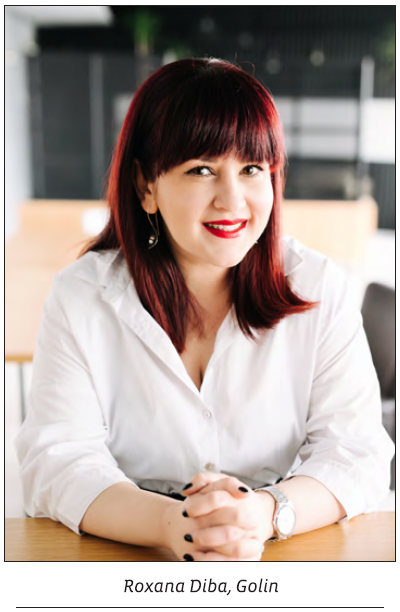Employer branding remained a top priority for companies in 2021 – Business Review – Business Review
According to Universum’s Employer Branding NOW 2020 survey, the share of large companies that say they are “very concerned” about growing competition for key talent from the startup sector dropped by half in 24 months. In 2018, 38 percent had said they were very concerned; in 2020, only 17 percent felt the same. The stability of large companies (and their large balance sheets) now appears to be a much more attractive factor for job seekers.
By Romanita Oprea
According to the same study, even in an economic downturn, employer branding represents table stakes for competitive talent brands. Only 3 percent of the World’s Most Attractive Employers say it’s not a top priority. Recruiters have unwittingly been preparing for the “new normal” of covid-19 for a few years: in 2020, 82 percent said they had adopted video recruiting, up from 59 percent in 2019. At the same time, “people analytics” (using technology and AI to drive smarter decisions at scale) has jumped from 28 to 43 percent.
The study also shows that talent leaders are optimistic about hiring over the next 12 months. Prior to March 15, 2020, 48 percent of talent leaders reported they would be increasing recruiting efforts; after March 15, that rate dropped by more than half to 22 percent. Yet the same study conducted during February and March of 2021 found that 42 percent were planning to boost recruiting, and another 44 percent said their recruiting would maintain the same pace.
In Romania, foreseeing the acceleration of the field, the GMP PR agency created an internal division dedicated to Employer Branding in January 2018. This happened in the context of Romania’s labour market being more dynamic than ever, with more and more employers developing communication campaigns in order to inspire, generate loyalty, and retain their employees. The division provides consultancy on internal and external employer branding, recruitment and loyalty campaigns, internal communication, as well as tactical actions that can support HR objectives. “Our agency responds to specific market needs. Finding and retaining workforce is one of our clients’ main concerns today. Millennials and Generation Z are putting a lot of pressure on employers lately. Traditional motivation tools such as bonuses and team buildings are losing their effectiveness, as the new generations of employees are expecting memorable experiences from the workplace. Companies that adopt a realistic employer branding strategy will have the most to gain,” said Ioana Manoiu, managing partner at GMP PR, back when the agency’s employer branding division was launched.
Indeed, when the pandemic hit, employer branding was in full bloom, with a large number of companies requesting these types of services from PR and advertising agencies. According to Raluca Marinescu, head of the employer branding & integrated communication division at GMP PR, we are living in a time when everything is being reinvented. Companies, people, teams – all seeking evolution and improvement as they adapting to present challenges. “As clients’ needs keep evolving, our agency keeps growing in order to meet their expectations. And as their demands are diversifying, we are expanding our teams and widening our areas of expertise, so this year our Employer Branding Division is evolving and becoming an Employer Branding & Integrated Communication Division. We launched it in 2018, as an obvious reaction to market demand,” Marinescu said.

Some things have changed in the meantime though, including the fact that employers are placing an increased focus on staying close to their teams, which the GMP PR representative considers to be a change for the better. In pandemic times, we all felt the need to have people close to us, to receive support from our “tribes,” to feel that someone was taking care of our personal needs and protecting us, and employers were often the ones to provide that kind of support. “Family always came first, but it also seemed important to have the support of what could be called our second families, with whom we used to spend eight hours a day. In this context, employers never stopped investing in the wellbeing of their teams. In fact, we saw an even bigger interest in communication platforms that could maintain a close connection between employees and offer support during hard times,” Raluca Marinescu added.
Ena Karabelas, executive director at Chapter 4 Romania, agrees that attracting and retaining talent has been a colossal challenge for companies operating on the local market for the past couple of years. “Even if it was not the main focus of our communications activities, many of our corporate accounts have also included engagements in this area. In fact, as we have grown our corporate communications department in the past years, employer branding and building brand awareness for B2B companies have been the most in-demand services, especially for companies in highly competitive sectors like IT&C. The underlying issues – the highly competitive market, labour migrating abroad, and the need to differentiate from competitors based on values, not money – have not changed during the pandemic. If anything, they have been joined by a host of new challenges,” said Chapter 4 Romania’s executive director. She also noted that over the past 18 months, many of our values and habits, on both a personal and professional level, have been challenged and transformed. When it comes to the ways in which we evaluate our jobs and working environments, people all across the world are paying closer attention to peer-to-peer relationships. “They are looking at how management teams have cared for and supported their employees throughout the pandemic and how their mental health and emotional support needs have been met. Coupled with the shift in the way we work (with remote or hybrid modes in many companies) and the greater focus on flexible working, this new worldview pushes companies towards reevaluating their EVPs (Employee Value Propositions),” Karabelas explained.
At BCR they are in a continuous journey of shaping our culture both internally and externally. According to Delia Gafton, internal communication expert at BCR, prior to this pandemic, they defined their beliefs and started shifting the culture in a more opened and transparent direction, with an innovative approach and mindset. “It all came from inside, from our colleagues’ beliefs, keeping pace with our clients, in an agile and adaptive way. This has led to creating a pool of internal ambassadors that promote BCR, as micro-influencers in their communities, building the trust partnership with both our colleagues and clients,” said Delia Gafton.
The pandemic added more tools to their communication and reminded us an important lesson – that many of us may have forgotten – genuine communication always creates connections. And this is precisely what they did. “We facilitated moments for our colleagues to interact, to express themselves in teams and to a wider audience and, most of all be an active part of our internal community. We created a program called SMARTWORK@BCR, that gathers initiatives generated by our colleagues, meant to make work more efficient in this new environment in which we operate in a hybrid mode. So, pandemic came with a high level of engagement that surpassed the classical Internal Communication boundaries and generated a crowdsourcing movement, with high impact in each of our daily activity. Employer branding plays a bigger role in shaping the way we do business,” commented Maria Olaru, employer branding specialist at BCR.
According to Roxana Diba, managing director at Golin, the increase has been seen especially in economic sectors where financial benefits are extremely competitive – such as IT/software development, banking, and so on. Employer branding turned into a very important brand differentiator, as companies knew that money alone would no longer make enough of a difference. “In order to attract the best talents, companies started to think of other benefits they could offer prospects in order to seal the recruitment deal. This emphasis on employee experience translated into increased presence at job fairs, business events, higher education institutions, and leisure time areas, where brands could present their offering directly or indirectly to potential employees. Communicating about company culture and values was also prioritised, as brands knew how important it was for their ethos to resonate with their recruits,” said Roxana Diba, adding that the biggest spike in employer branding occurred during the pandemic.
“People with common values always find each other. For us, this is the right colleague. We defined recruiting strategies to always have access to bigger pools of talents. We adapted and we work in a flexible way, so that we can keep our competitiveness on the market.
A great thing that helped us during these times is the fact that we did not stop the recruitment process, but continued rolling out even the internship programs, in IT areas especially, doing them remotely. Over the past 30 years we developed as a bank, through innovation. It helped us evolve, and this is easily notable by our clients and future colleagues,” added Maria Olaru.
Recent changes
The most consequential recent change, in GMP’s Raluca Marinescu’s view, was the need to communicate with remote teams using new channels. As a result, external communication platforms have been integrated with companies’ existing tools, internal platforms have been prioritised, and new internal platforms and programmes have been launched. “The first step was to ensure that normal operations could carry on, so as employees moved to remote working, we saw higher usage of digital platforms created to keep people connected and offer them the best tools to continue working as teams. Employers moved their focus to employee health, both physical and mental, by developing wellbeing programmes and teaming up with sports trainers, mindfulness experts, and psychologists,” she said.
Many companies took it a step further, getting even more involved in their employees’ lives through programmes that also included their families, whether we’re talking about medical services and assistance or about ways to entertain them while they were spending all that time at home.
“As a communication agency, we have been involved in creating these kinds of programmes and making sure that the information reached all our clients’ employees. Right now, we are talking about ways to find that optimal new way of working, whether it’s remote, hybrid or fully going back to the office. There is a huge challenge in terms of communication, as people consume information in different ways. And while some are already getting used to the hybrid work model, companies must make sure that employees who are still fully remote don’t miss a thing. And that’s where we jump in to find the best solutions,” Raluca Marinescu added.
Golin’s managing director confirms the trend of companies having started to provide extra support by tailoring benefits to the needs of both employees and their families. “We have had more companies asking us to develop solutions that would enhance dialogue with employees, keep them informed about what is happening at all times, and raise awareness about company wellbeing initiatives. Employee mental health has also risen on the list of priorities, as workers felt isolated, disconnected, and uncertain about the future. Companies have introduced lighter working hours, mental health hotlines, and online check-ins with team members and management in order to build deeper connections and strengthen bonds inside the company,” Roxana Diba explained, adding that after March 2020, an overwhelming majority of companies introduced at least one new wellbeing benefit for their employees and thus faced the challenge of implementing it and communicating about it.
What companies want
From a company’s perspective, Daniela Bacaoanu, HR manager at dcs plus, says that the best and strongest employer branding strategy is created, implemented, and maintained through team collaboration, because teams are living proof of a company’s values and organisational culture. “If a person identifies themselves with the company’s values and goals, our perception is that they will contribute to the growth of our employer brand. Priorities have not changed for dcs plus, but we have a more focused approach when reaching out to different types of candidates, meaning that we are using different employer branding actions based on the types of workers we are looking for at any given time. We have built strong relationships with our colleagues throughout all these amazing years. The pandemic has proven to us once again that we can count on these relationships,” said the dcs plus HR manager.
A top employer brand starts with a strong recruitment process. dcs plus is a highly selective company and its representatives think that profiling the right candidate during the recruiting process gives them a better chance to attract the right talent, which can bring energy, good vibes, and a fresh way of thinking. And of course, “once you find the right people, it’s a matter of how you structure the integration and onboarding process, as this is a natural step in shaping the company as a community based on strong connections and a solid structure of knowledge transfer. We believe that these two elements are at the core of the strategy to continuously boost our employer brand,” Daniela Bacaoanu argued.
On her turn, Maria Olaru says that they take pride of their open culture and environment that inspires them to have courage, initiative, and push boundaries. It is a great mix of innovation, combined with knowledge in the financial education area, that is nurturing their trust in moving forward. This is transferred to the clients and enables BCR to further reinvent the way it does banking.
How long does it take to create and implement a good employer branding strategy and campaign? According to George Toma, internal communication expert at BCR, it’s a continuous process. “We started shifting the culture a few years ago and we are constantly adapting it, taking into consideration every contribution made by our colleagues and clients. We do believe that each contribution is shaping the way we interact. Therefore, our strategy is based on constant values, communicated in a coherent manner. But we keep the bold element, the innovation, as a focus for reinventing things,” Toma explained.
But what do companies want when they contract a PR agency’s services? “We’re seeing a lot more emphasis on internal communication and on projects that are very employee-centric among our clients. I believe that, with all the trials and tribulations of the past year and a half, employers now fully and truly understand the value of their employees. They are acknowledging the fact that you cannot build a pretty façade on top of a dysfunctional internal working environment. They have also come to realise that beauty does come from the inside, even in professional contexts. We are having more conversations which start from meaningful insights and look at how we can build a strong EVP that is appropriate for the present day, yet flexible enough to withstand more changes in the future. Only then do companies look to external communication. And when they do, we look closely at how to bring real added value to the recruitment process through various communication tools,” Ena Karabelas noted.
In turn, Raluca Marinescu believes that all companies want to become best employer in their class, and reaching this goal takes more than a few employer branding campaigns. A key element to a company’s popularity as an employer is its employee value proposition. An effective EVP integrates employee engagement with branding in order to support an efficient candidate attraction and retention approach. Marinescu argues that it all starts from the inside, from the organisational culture and from HR and communication teams that stay in close touch with all current and potential employees, and it continues with each and every employee’s actions, as it is all about company values and the way employees adopt and implement them. “Agencies come next, as we support clients in becoming even better and communicating about their position on the employment market, both internally and externally. It takes a solid team to create an employer branding strategy that starts with the customer and extends to the agency, and a relationship that’s based on honesty, trust, and experience. In terms of time, it takes years to build the background for a good employer branding campaign, years of growing a healthy organisational culture that can afterwards be communicated through such a campaign. The campaign itself can take about 2-3 weeks to conceive, about 2-3 months to plan and implement, and it may be carried over a period of about 6 months,” explained the head of GMP PR’s employer branding & integrated communication division. After all, she points out, a good employer brand is the decisive factor in strong candidates joining one company or another. And once hired, employees expect a lot from their organisations: besides career growth opportunities, they want to know that they’re working for a company they can be proud of.
“Employer branding is not something that should be done as a one-off, meaning that it’s not enough to just put out a nice campaign with great copy and nice visuals. It is instead a constant effort that always begins from the inside and then branches out to external audiences, sometimes requiring more communications efforts (and a solid budget), and other times just being a part of a standard comms approach,” added Ena Karabelas.
Their views are supported by the dcs plus HR manager, who adds that building an employer brand is not something that a company can expect to get done overnight. Employer branding starts with the company’s very first employee, and it is always a work in progress. “We believe that employer branding is driven by the actual quality of our workplace, so making our business a great place to work is crucial to us. A good employer branding strategy is an ongoing process for our company, whether we are referring to building the right brand in the eyes of our employees and offering them the professional context they need for growth or to what we can offer to a future candidate. How you treat your people defines the way they are thinking about your company and how they are talking about it on the outside,” Daniela Bacaoanu concluded.
At the same time, as Delia Gafton pointed out, employer marketing should have in focus creating a long-term relationship with future colleagues. Therefore, she believes that marketing tools will make way in the area and we will see niched audiences, a developed profile area and a more data-oriented recruiting.
“However, the biggest trend will be not losing the human side. We are passing a time in which we must take care of our mindfulness, our wellbeing, and for the next years this will be an important topic of discussion,” concluded Gafton.
Moreover, according to Roxana Diba, a good employer branding strategy assumes that a company will constantly and consistently develop related activities. However, if a brand wants to draw up a strategy and implement it, Golin can help with all of its needs. “What we need is to understand the brand’s objectives while also researching company culture and values. As each organisation is unique and has a specific ethos, this process helps us craft a tailor-made solution for each client. Once a comprehensive strategy is created, criteria such as urgency, budget, and complexity dictate what the timeline should look like – however, an efficient campaign can take anywhere from 3 months to a whole year to implement,” she said. At the same time, what the Golin representative tries to emphasise in conversations with clients is that organisational culture is built gradually, through constant monitoring and communication, idea testing, and flawless implementation. “To do it right, we take into account all potential factors and adapt the brand’s key messages accordingly. Investing in employer branding is a guaranteed success, which why more and more companies are comfortable doing it and asking us to help out in the process.”
We use cookies for keeping our website reliable and secure, personalising content and ads, providing social media features and to analyse how our website is used.


:quality(80)/business-review.eu/wp-content/uploads/2021/12/unnamed-52.png)




